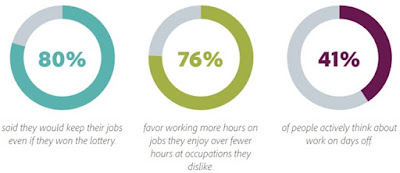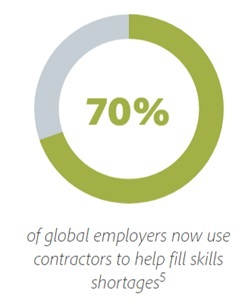The way we work is changing. You probably already know that. But what’s even more interesting is how it’s changing. As a new dawn of a tech-savvy workforce, and millennials reigning the global workforce approaches, companies across Asia seem to be grappling with this sea change – and many seem to be lost in the process of transformation. Companies are becoming increasingly concerned that they will soon be unable to find the talent that they will need to succeed, with a shortage of suitably skilled workers their single biggest worry
This issue is pertinent to Singapore, whose millennials make up the largest generation in the Singapore workforce today. As their career expectations and aspirations grow more demanding, Singapore employers face great pressure to take urgent action to engage with this significant proportion of the workforce.
Employees in Singapore are also less engaged this year than their Asia Pacific counterparts. While engagement scores rose from 60 percent in 2014 to 65 percent in 2015 across Asia Pacific, the score in Singapore rose by only 3 points—from 60 percent to 63 percent.
The technological and cultural shifts ushered in by the digital revolution have drastically changed the way employees approach their work opportunities, and that means the employers need to change the way they think about their employees as well. To help employers understand these new expectations and its importance to a healthy and productive workforce, Adobe’s “Work in Progress” research report shares insights into what work looks like today and how it’s changing for the future. Some of the insights are:
- People really love to work
80 percent said they would keep their jobs even if they won the lottery. Seventy-six percent favor working more hours on jobs they enjoy over fewer hours at occupations they dislike. And people actively think about work 78 percent of the time on workdays and 41 percent of the time on days off.
Data like this underscores the massive changes taking place in the workplace today. The technological and cultural shifts ushered in by the digital revolution have drastically changed the way employees approach their work opportunities, and that means the employers need to change the way they think about their employees as well.
- Geeking about gig economy
What a difference a century makes. Since the start of the 2000s, employees and employers have increasingly becoming less loyal to each other. Over the last few years, temporary works have increased and long-term employment has decreased. In fact, over 70% of global employers now use contractors to
help fill skills shortages, according to TechRepublic.
Experts expect that shift to continue, to the point where half or more of all work will be performed by freelance contractors in some way. Why? Efficiency for one. The so-called “gig” or short-term employment economy allows workers and employers to meet tight-deadlines as demand and personal passions fluctuate. That’s the biggest reason.
- Rise of workplace machines
Workers today expect to have future workspaces that encourage unconscious thought, smart coffee machines that know when and what to brew, chatbot assistants, fully distributed workforces, do-everything dashboards, and conference rooms that awake and revert to your personal settings whenever employee badge enter.
Along with fancy technology, workspace is one of the most important things to employees. To maximize the output and creativity of employees, companies are redesigning internal workspaces and increasingly turning to communal design, more commons areas, and even co-working spaces. By creating spaces that feel like the local coffee shop or park, employers are enabling more natural interactions and opportunities to get out from behind the cube wall
In looking at the future of work, three themes emerged again and again—people, workspaces, and technology. Those are the three big focal points. How companies approach those three areas, then, will ultimately determine how well prepared they are for the future.
For the LATEST tech updates,
FOLLOW us on our Twitter
LIKE us on our FaceBook
SUBSCRIBE to us on our YouTube Channel!







